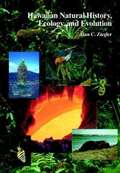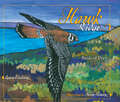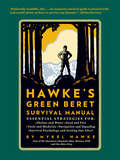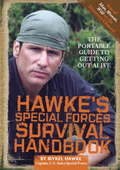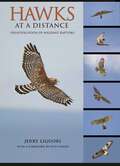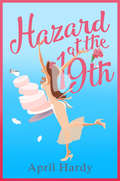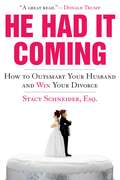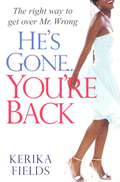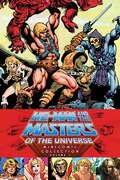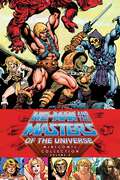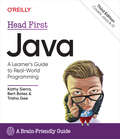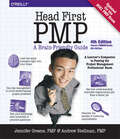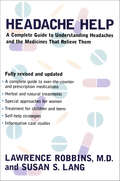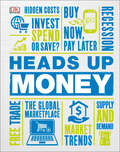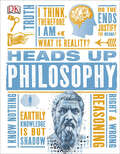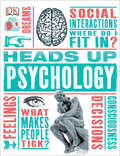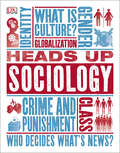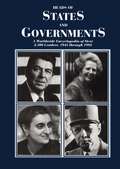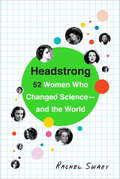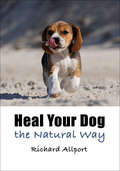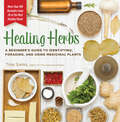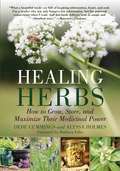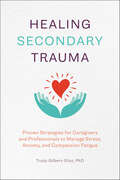- Table View
- List View
Hawaiian Natural History, Ecology, and Evolution
by Alan C. ZieglerNot since Willam A. Bryans 1915 landmark compendium, Hawaiian Natural History, has there been a single-volume work that offers such extensive coverage of this complex but fascinating subject. Hawaiian Natural History, Ecology, and Evolution updates both the earlier publication and subsequent works by compiling and synthesizing in a uniform and accessible fashion the widely scattered information now available. An extensive annotated bibliography and a list of audio-visual materials will help readers locate additional sources of information.
Hawaiian Phrase Book
by Charles E. Tuttle Company, Inc.Originally, the primary object of this manual was to teach natives to converse in English. At the same time, the work is designed to assist strangers, speaking English, to acquire the correct colloquial speech of the Hawaiians.
Hawk Ridge: Minnesota's Birds of Prey
by Laura EricksonWas Caesar like the eagle because of his aquiline (from aquila, for &“eagle&” in Latin) nose, or does the eagle seem imperial because of his Caesar-like beak? Does the sharp vision of a &“hawk-eyed&” observer have any basis in nature? And what the heck is &“kettling&” to a bird-watcher, or, for that matter, a bird? Raptors have captured the imagination from time immemorial and have an especially rich history in Minnesota. The ancient peoples whose pictographs adorn the rock faces of Lake Superior&’s North Shore may well have witnessed the first hawk movements along Lake Superior—the same annual migration that today draws as many as twenty thousand people to Duluth&’s Hawk Ridge. These birds, passing through in astounding numbers, are among the hawks and accipiters, buteos and harriers, eagles and ospreys pictured and profiled in detail in this book.Written by one of Minnesota&’s best-known bird authorities, with images by one of the state&’s favorite illustrators, Hawk Ridge is as fun as it is informative. It introduces the state&’s raptors, from the rare visitor to the most familiar hawk, noting each species&’ signature traits—osprey wings, for instance, are crooked to help them catch fish; vultures urinate on their legs to cool themselves—and their nesting, breeding, and migrating habits. Did you know that Sharp-shinned Hawks banded at Hawk Ridge have been found throughout Central America and even into South America, and also, in midwinter, in Wisconsin? Laura Erickson offers a broad perspective (a bird&’s-eye view!), making sense of the raptor&’s role in the larger ornithological scheme.With descriptions of various species—and helpful distinctions between species, families, and orders—the book gives readers a clear idea of which raptors might be seen in Minnesota, when, where, and how often. It also includes a hawk migration primer that explains the movements that bring these birds in such awe-inspiring numbers to places like Hawk Ridge. Filled with curious facts and practical information for expert and amateur bird-watcher alike, the book is at once a guide to the hawks of Minnesota and a beautifully illustrated album of the most regal members of the avian kingdom.
Hawke's Green Beret Survival Manual: Essential Strategies For: Shelter and Water, Food and Fire, Tools and Medicine, Navigation and Signa
by Mykel HawkeSurvival is 10% knowledge and 90% attitudeuHawke"
Hawke's Special Forces Survival Handbook: The Portable Guide to Getting Out Alive
by Mykel HawkeU. S. Special Forces Captain and outdoor survival expert Mykel Hawke provides the most practical and accessible survival skills and information necessary to survive in the outdoors. These methods are based on Hawke's 25-year career as a Captain in the U. S. Army, as founder of the survival training company Special Ops Inc, and as a popular survival expert on television--including his new series, "Man Woman Wild," which debuted on The Discovery Channel in summer 2010. Geared to the untrained civilian, "Hawke's Special Forces Survival Handbook" provides illustrated how-to info on shelter, water, fire, food, first aid, tools, navigation, signaling, and survival psychology. Now with a flexibind cover and small format perfect for the glove compartment and backpack, this edition gives readers the tools necessary to survive the worst circumstances and make it out alive.
Hawks In Flight
by Pete Dunne Clay Sutton David SibleyAmong the world's most popular birds, hawks can be some of the most difficult birds to identify. They're most often seen flying high above and at a distance. In the first edition of Hawks in Flight, Pete Dunne, David Sibley, and Clay Sutton presented a holistic method of hawk identification, using general body shape, the way they move, and the places they are most likely to be seen. The new edition of the book that Roger Tory Peterson called a "landmark" integrates an array of carefully selected photographs, David Sibley's superb illustrations, and a clear, information-packed text and takes raptor identification to a higher level. This edition covers all of the raptors that breed in North America, including those with limited ranges in Florida, the Southwest, and Texas. Picking up where its predecessor ended by including two decades of raptor identification refinement, Hawks in Flight summarizes and places in users&’ hands an identification skill set that used to take years to master. The unique alchemy of Dunne, Sibley, and Sutton—including their collective experience of more than one hundred years watching hawks—make this book a singular achievement and a must-have for anyone interested in hawks.
Hawks at a Distance: Identification of Migrant Raptors
by Jerry LiguoriThe ultimate field manual for identifying distant raptorsThe ultimate must-have guide for identifying migrant raptors, Hawks at a Distance is the first volume to focus on distant raptors as they are truly seen in the field. Jerry Liguori, a leading expert on North American raptors, factors in new information and approaches for identifying twenty-nine species of raptor in various lighting situations and settings. The field guide's nineteen full-color portraits, 558 color photos, and 896 black-and-white images portray shapes and plumages for each species from all angles. Useful flight identification criteria are provided and the accompanying text discusses all aspects of in-flight hawk identification, including flight style and behavior. Concentrating on features that are genuinely observable at a distance, this concise and practical field guide is ideal for any aspiring or experienced hawk enthusiast.The first guide to focus on distant raptors as they are viewed in the fieldNew information and approaches for identifying distant raptorsIllustrates twenty-nine species in various lighting situations and settings558 color photos and 896 black-and-white images depicting plumage and shape characteristicsAll aspects of in-flight hawk identification, including flight style and behavior
Hazard at the Nineteenth
by April HardyMeet the Hazards:When Stella’s future mother-in-law ‘accidentally’ feeds her a nut-filled cake, her night disastrously ends in A&E. Stella knows that Joyce doesn’t like her, but murder by allergy is just one step too far. And don’t even mention ally, Cordelia, ‘the girl next door’.Charity committee member Joyce worries that Stella doesn’t like her. She tries to put the quiet, bookish girl at ease, but everything she does backfires. When she enlists a family friend’s help, she’s sure things will run more smoothly. But Cordelia has other ideas…Will Stella ever make it down the aisle or is she destined not to fit in with the Hazards?
He Had It Coming: How to Outsmart Your Husband and Win Your Divorce
by Stacy Schneider Esq.It's all about getting even. We all know that women earn less than men, and unfortunately this also applies to the spoils of divorce. Veteran trial attorney and former divorce lawyer Stacy Schneider, Esq., knows what it takes to get women their fair share, and now, using examples from her own practice and her own divorce, she is making the strategies that worked for her available to you! In a single handbook, He Had It Coming answers your questions, calms your nerves, and walks you through the process with confidence and control. Centered around her one-of-a-kind Pre-Divorce Plan, Schneider guides you through a divorce lawsuit, revealing insider information, divorce success secrets, and tactics, including: the answer to the number one question asked by wives on the verge of divorce crucial planning measures to implement before the papers are filed a hidden asset search plan to help make sure you don't walk away with less than you deserve tried-and-true stealth negotiation techniques to get you what you want how you can possibly save thousands of dollars by handling aspects of divorce yourself the way to hit a cheating spouse in his wallet. Packed with checklists, strategic tips, sample practice dialogues, and firsthand pointers, He Had It Coming is the ultimate companion guide for any woman changing her "I do" to an "I don't."
He's Gone...You're Back
by Kerika FieldsYour relationship may be over--but you've only just begun. . . It may have been a long time coming, but the moment in your relationship when you know it's over once and for all, has finally arrived. And while this signifies an ending, it also means a beautiful new beginning. In this supportive and inspiring book, Kerika Fields helps you navigate the dark, scary post-relationship abyss, and come out the other side ready to laugh--and love--again. With humor, understanding--and real-life stories from women just like you--Kerika shows you how to mourn the loss, and move on. Here is a mind, body, and spirit plan for recovery that will guide and reassure you through the worst days, and prepare you for the future--because the best really is yet to come. Discover how to: Commit to your recovery like you were committed to your relationship Avoid becoming another angry, bitter woman (there are enough of those!) Keep showing up to your life--no matter how disappointed or depressed you are Fight--and win--the toughest battle: between yourself and your demons Complete with a daily self-love checklist, affirmations, recommended reading, an uplifting You're Back! playlist to get you dancing through your tears, and much more. Whether you're stuck in the limbo of a painful relationship or struggling in solitude, this invaluable book will see you through to a life filled with abundance and joy.
He-Man and the Masters of the Universe Minicomic Collection Volume 1
by VariousTHE MOST POWERFUL STORIES IN THE UNIVERSE! The toy juggernaut Masters of the Universe and its subsequent action figure lines featured memorable pack-in minicomics that aided in playtime for children across the world. This two volume digital collection features sixty-eight US releases, including all minicomics from the eighties Masters of the Universe line, the eighties Princess of Power line, and the eighties and nineties He-Man line, plus an introduction to the minicomics in the current Masters of the Universe Classics toy line. Relive the illustrated adventures that fueled your imagination!
He-Man and the Masters of the Universe Minicomic Collection Volume 2
by VariousTHE MOST POWERFUL STORIES IN THE UNIVERSE! The toy juggernaut Masters of the Universe and its subsequent action figure lines featured memorable pack-in minicomics that aided in playtime for children across the world. This two volume digital collection features sixty-eight US releases, including all minicomics from the eighties Masters of the Universe line, the eighties Princess of Power line, and the eighties and nineties He-Man line, plus an introduction to the minicomics in the current Masters of the Universe Classics toy line. Relive the illustrated adventures that fueled your imagination!
Head First Java: A Brain-Friendly Guide
by Bert Bates Kathy Sierra Trisha GeeWhat will you learn from this book?Head First Java is a complete learning experience in Java and object-oriented programming. With this book, you'll learn the Java language with a unique method that goes beyond how-to manuals and helps you become a great programmer. Through puzzles, mysteries, and soul-searching interviews with famous Java objects, you'll quickly get up to speed on Java's fundamentals and advanced topics including lambdas, streams, generics, threading, networking, and the dreaded desktop GUI. If you have experience with another programming language, Head First Java will engage your brain with more modern approaches to coding--the sleeker, faster, and easier to read, write, and maintain Java of today.What's so special about this book?If you've read a Head First book, you know what to expect--a visually rich format designed for the way your brain works. If you haven't, you're in for a treat. With Head First Java, you'll learn Java through a multisensory experience that engages your mind, rather than by means of a text-heavy approach that puts you to sleep.
Head First PMP: A Learner's Companion to Passing the Project Management Professional Exam (Head First Ser.)
by Jennifer Greene Andrew StellmanNow updated for the 2021 PMP Exam What will you learn from this book?Head First PMP teaches you the latest principles and certification objectives in The PMBOK® Guide in a unique and inspiring way. This updated fourth edition takes you beyond specific questions and answers with a unique visual format that helps you grasp the big picture of project management. By putting PMP concepts into context, you'll be able to understand, remember, and apply them--not just on the exam, but on the job. No wonder so many people have used Head First PMP as their sole source for passing the PMP exam.This book will help you:Learn PMP's underlying concepts to help you understand the PMBOK principles and pass the certification exam with flying colorsGet 100% coverage of the latest principles and certification objectives in The PMBOK® Guide, Sixth EditionMake use of a thorough and effective preparation guide with hundreds of practice questions and exam strategiesExplore the material through puzzles, games, problems, and exercises that make learning easy and entertainingWhy does this book look so different?Based on the latest research in cognitive science and learning theory, Head First PMP uses a visually rich format to engage your mind, rather than a text-heavy approach that puts you to sleep. Why waste your time struggling with new concepts? This multi-sensory learning experience is designed for the way your brain really works.
Headache Help: A Complete Guide to Understanding Headaches and the Medications That Relieve Them
by Susan S. Lang Lawrence RobbinsMany people who suffer from headaches never consult a doctor, believing that no help is available, while others become frustrated and give up the search for relief. Fully revised and updated, this valuable book can save you time and trouble and help you stop the pain. It describes the full range of treatment options for migraines, cluster headaches, and tension headaches. It includes easy-to-understand information on the actions and side effects of hundreds of over-the-counter and prescription medications that prevent or abort headaches or dull the pain of a headache in progress. Special highlights: Details on the medications that have revolutionized migraine treatment Discussion of how hormones affect migraines Quick-reference guides to the medications that are most likely to work for your particular condition Helpful suggestions on how to describe your headache to your physician Hard-to-come-by information on headaches in children, teens, women, and people over fifty Alternative treatments, including herbs and acupuncture Self-help strategies such as relaxation techniques and biofeedback A national index of headache clinics and organizations
Heads Up Money (DK Heads UP)
by DKDoes money make the world go round? Can wealth buy happiness? What would happen if a bank simply printed more money? Find out the answers to these questions and much more in Heads Up Money. Using real-life scenarios, you will learn abou a variety of topics including supply and demand, free trade, globalization, and financial crises. Packed with colorful graphics and easy-to-follow text, this indispensable book will help you understand money and the role it plays in our world.This comprehensive volume also explores international financial institutions, ethical trade, and how to run an efficient and successsful business. Whether you&’re analyzing the global marketplace, studying booming market trends and how to make use of them, calculating hidden costs, or deciding between investing, spending, or saving, Heads Up Money will help you navigate the tricky waters of economics and financial planning.Written by renowned author Marcus Weeks in consultation with Derek Braddon, Professor of Economics at UWE Briston Business School, this book is the perfect introduction to the world of money and finance for teenagers and young adults.
Heads Up Philosophy (DK Heads UP)
by DKThe second installment in DK's new Heads Up series, Heads Up Philosophy addresses the issues and theories that are most intriguing and relevant to the curious minds of teens — making a difficult topic easier to comprehend. Questions such as "What is knowledge?" "What is reality?" "What is the mind?" and "What's right and wrong?" are all addressed, offering big ideas, simply explained. Written and designed specifically for the teen market, Heads Up Philosophy combines challenging but clear text with cool graphic illustrations that clarify and explain theories and arguments. Biography spreads cover the famous quotes of great philosophers including Socrates, Aristotle, Friedrich Nietzsche, Epicurus, Plato, and Thomas Aquinas, while major theories and debates including epistemology, metaphysics, and ideologies are also explained. Heads Up Philosophy also includes case study panels, diagrams, and real world spreads to show how philosophical theories relate to everyday life. Making a difficult subject more approachable, Heads Up Philosophy is designed to provoke, entertain, and stimulate young minds.
Heads Up Psychology (DK Heads UP)
by Marcus WeeksMaking a difficult topic easier to comprehend, Heads Up Psychology offers big ideas, simply explained, for teen readers. Psychology is all around us — in the advertising we see, the politics we debate, and in the development of products we use every day. Using engaging graphics, Heads Up Psychology explores the big ideas from all areas of psychology including psychoanalysis, intelligence, and mental disorders. With easy-to-understand coverage of all the approaches to psychology, and the ideas of more than 60 psychologists, from Asch to Milgram and Ramachandran to Zimbardo, this introduction to an often complicated subject is written with young-adult readers in mind, and is structured around the questions they often ask, like "How do I fit in?", "Who needs parents, anyway?", and "Why do I feel so angry all the time?" In Heads Up Psychology, psychological theories are explained with the help of cleverly conceived graphic illustrations and diagrams to show how they relate to everyday life. Biography spreads give interesting insights into the lives and work of Freud, Pavlov, and more, while other psychologists and their big ideas are profiled in a comprehensive directory, and case study panels describe groundbreaking experiments in the field. Supports the Common Core State Standards.
Heads Up Sociology (DK Heads UP)
by DKWhy does racism exist? Is Big Brother watching us? Why are women paid less than men? Investigate society&’s hidden truths, from gender and identity politics to consumer culture with this insightful guide.Sociology is the study of how societies are organized and what helps them function or go wrong. Heads Up Sociology explores a range of curious social phenomena, including poverty and class status, white-collar crime, religious beliefs, and internet anxieties. The book helps readers see themselves and their communities in the context of a larger, globalized world. Fascinating biographies offer insight into the lives and work of key researchers such as Karl Marx, Judith Butler, and Howard Becker, while well-illustrated case studies and real-life scenarios bring their ideas to life. Stunning infographics further explain the ebb and flow of power in society. Heads Up Sociology is the ultimate tool to help you get to grips with sociology in time for exams and is an essential read for anyone keen to ask the big questions about the world we live in today.
Heads of States and Governments Since 1945 (Lentz's Performing Arts Obituaries Ser.)
by Harris M. Lentz IIIMore than half the nations that exist today have gained their independence since 1945. During this period over 2,300 individuals have ruled the various nations of the world; this encyclopedia offers insight into the history of individual nations through the lives of their leaders. Outstanding Academic Book
Headstrong: 52 Women Who Changed Science-and the World
by Rachel SwabyFifty-two inspiring and insightful profiles of history's brightest female scientists. In 2013, the New York Times published an obituary for Yvonne Brill. It began: "She made a mean beef stroganoff, followed her husband from job to job, and took eight years off from work to raise three children." It wasn't until the second paragraph that readers discovered why the Times had devoted several hundred words to her life: Brill was a brilliant rocket scientist who invented a propulsion system to keep communications satellites in orbit, and had recently been awarded the National Medal of Technology and Innovation. Among the questions the obituary--and consequent outcry--prompted were, Who are the role models for today's female scientists, and where can we find the stories that cast them in their true light? Headstrong delivers a powerful, global, and engaging response. Covering Nobel Prize winners and major innovators, as well as lesser-known but hugely significant scientists who influence our every day, Rachel Swaby's vibrant profiles span centuries of courageous thinkers and illustrate how each one's ideas developed, from their first moment of scientific engagement through the research and discovery for which they're best known. This fascinating tour reveals these 52 women at their best--while encouraging and inspiring a new generation of girls to put on their lab coats.From the Trade Paperback edition.
Heal Your Dog the Natural Way: Healing Your Pet The Natural Way
by Richard AllportA top veterinarian explains how to treat nearly one hundred conditions and diseases affecting dogs using natural medicines and complementary therapies. The popular vet and animal homeopath, Richard Allport, shows how to heal your dog naturally through foods, homeopathy, herbal medicine, and a variety of other methods, many of which can be done at home. A radio regular, Richard understands both dogs and their owners and combines his expertise with accessible language to show readers how to treat their dogs from using banana skins for warts to getting dogs to take pills in a stress-free way. No dog owner should be without this book.
Healing Herbs: A Beginner's Guide to Identifying, Foraging, and Using Medicinal Plants
by Tina Sams“Guides you step by step through the how and why of medicinal herbs in a down to earth and experienced manner.” —Susanna Reppert Brill, The Rosemary House, Mechanicsburg, PAEver wondered about the benefits of dandelion, chickweed, and elder? Healing Herbs is an essential reference for the beginning herbalist, featuring 20 common herbs, many of which are considered weeds, that can often be found in hedgerows, meadows, and wild places.Along with medicinal information, this book includes traditional folklore and fortifying recipes for each edible or medicinal plant, and plenty of easy-to-follow instructions to help fill a backyard herbalist’s medicine chest with remedies to keep the whole family happy and healthy.Healing Herbs is conveniently organized by plant, making it easier for the home herbalist to find, identify, and use healing plants from the backyard. Herbalist Tina Sams identifies the twenty most common and healthful herbs and over one hundred natural remedies that are easy, inexpensive, and effective. This illustrated guide is fundamental for any nature-lover’s library“The Healing Power of Herbs is a lovely, insightful introduction into the wonderful world of herbs and herbal healing. One finds all of the essential information and more including intelligent discussions on herb safety, herb gardening, herbal preparation, and remedies for common ailments. The author’s message is to reinforce the realization that while powerful, herbs are all around us and they are our allies in health.” —Rosemary Gladstar, herbalist author of Rosemary Gladstar’s Medicinal Herbs
Healing Herbs: How to Grow, Store, and Maximize Their Medicinal Power
by Dede Cummings Alyssa HolmesDig into the world of herbal medicine with this complete guide to cultivating and harvesting plants with healing properties. For thousands of years, people have been utilizing herbs and cultivating weeds found to speed the healing of wounds, soothe skin irritations, calm uneasy stomachs, and ward off illnesses. In these pages, you’ll learn the basics of gardening in your backyard-or on your windowsill or porch-including instructions for: Garden design Composting Garden maintenance Harvesting Recipes for salves, lotions, and poultices And more!You’ll also find profiles of useful herbs that are easy to grow or wildcraft, along with inspiring stories, medicine-making instructions, and recipes for your home medicine chest. Known to boost immunity, reduce blood pressure, aid digestion, and relieve arthritis among other medicinal properties, powerful plants such as garlic, Echinacea, yarrow, elderflower, mint, elecampane, and many more are included in this illustrated guide.
Healing Secondary Trauma: Proven Strategies for Caregivers and Professionals to Manage Stress, Anxiety, and Compassion Fatigue
by Trudy Gilbert-EliotTaking care of the caregivers—a compassionate guide to healing secondary traumaA traumatic experience can have profound impacts on the people directly involved. However, that trauma can extend to the professionals like first responders and crisis counselors, as well as the friends and family of trauma survivors—even if it wasn't a firsthand experience.Healing Secondary Trauma is the gentle guide to help you identify symptoms, understand the feelings, and begin the healing process of your own secondary trauma. With interactive exercises and cutting-edge strategies for caregivers and professionals, it will help you address the daily realities of compassion fatigue, stress, and anxiety. Your journey to recovery from secondary trauma starts here.Inside this book you'll learn:Find yourself again—Learn how to process and manage your emotional responses so you feel calmer, present, and more in control of yourself.Plan for wellness—Create a path toward healing with a personalized self-care plan and strategies to regenerate empathy when your compassion stores feel low.You're not alone—Stories about everyday people highlight how secondary trauma can affect all of us in different ways.Begin the healing process from your secondary trauma today.
